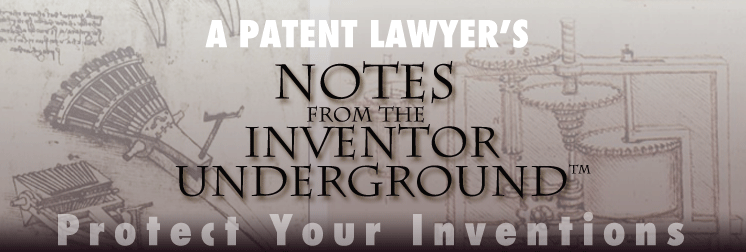Notes from the Inventor Underground

Challenge the Written Description
Patent and Technology trial lawyer Stan Gibson discusses how pending patent applications may be defeated by provisional patents filed earlier, unless you challenge the written description.
In pursuing patents for their inventions, inventors need to make sure that earlier filed provisional patent applications filed by other inventors do not preclude the inventor’s patent application. The Federal Circuit’s decision in In re Giacomini, (Fed. Cir. July 7, 2010) affirmed a USPTO Board of Patent Appeal’s decision that found the patent examiner properly rejected certain claims of a pending application. The decision in Giacomini occurred because an earlier filed provisional application by another inventor disclosed the same invention. Because the inventor failed to challenge the written description of the earlier filed provisional application, the inventor waived his right to do so on appeal and lost his patent as a result.
The Federal Circuit began by noting that "an applicant is not entitled to a patent if another’s patent discloses the same invention, which was carried forward from an earlier U.S. provisional application or U.S. non-provisional application." Here, the inventor did not dispute that the earlier provisional application described the invention claimed in Giacomini’s application. As result, the Federal Circuit found that the provisional, which pre-dated Giacomini’s filing date, was the first U.S. application to describe the invention.
The Federal Circuit, basing its reasoning on section 119(e) of the Patent Act, found that a non-provisional application is treated as though filed on the date of its corresponding provisional application. Noting that "[a]n important limitation is that the provisional application must provide written description support for the claimed invention," the Court found that because Giacomini never argued before the Board that the provisional failed to provide written description support for the claimed subject matter in accordance with section 119(e), Giacomini waived the argument by failing to raise it below."
Therefore, the Federal Circuit concluded that the patent “shall have the same effect,” including a patent-defeating effect, as to the claimed invention as though it was filed on the date of the provisional. The Court also rejected Giacomini’s argument that 35 U.S.C. § 119(e) shifts a patent’s priority date but not its effective reference date to the filing date of an earlier provisional application. Finding that Congress added section 119(e) along with the enactment of provisional applications in 1994, the Court held that Giacomini missed an important distinction between an earlier foreign application and an earlier U.S. provisional application. The Federal Circuit stated that:
Section 102(e) codified the “history of treating the disclosure of a U.S. patent as prior art as of the filing date of the earliest U.S. application to which the patent is entitled, provided the disclosure was contained in substance in the said earliest application.” [S]ection 119 cannot be read with section 102(e) to modify the express domestic limitation. In contrast, an earlier provisional application is an application “filed in the United States.” Treating a provisional application’s filing date as both the patent’s priority date and its effective reference date does not raise the alleged tension between sections 102(e) and 119. . . . Accordingly, the Tran patent has a patent-defeating effect as of the filing date of the Tran provisional, or September 25, 2000. Giacomini did not file his application until months after Tran filed his provisional application. Giacomini is not the first to invent in the United States and thus is not entitled to a patent.
The important lesson here is that if you have a pending application that may be defeated by an earlier filed provisional application, you need to challenge the written description of the provisional. Given the nature of provisional applications, it may well be that the written description will be insufficient and it is usually much easier to challenge the written description of a provisional application. But be warned: if you do not challenge the provisional’s written description at the appropriate time, you will waive the right to challenge the provisional during the appeal process. In this case, that may have cost one inventor his patent.
To view a representative list of Stan’s patent and technology cases, click here.
 Los Angeles Real Estate Litigation Lawyer Jeffer Mangels Butler & Mitchell LLP Home
Los Angeles Real Estate Litigation Lawyer Jeffer Mangels Butler & Mitchell LLP Home

